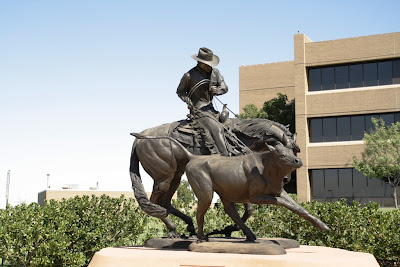We have three dump valves on the 42' Tour -- two grey tanks (60 gallons each) and the black tank -- also 60 gallons. I really like the large size of these holding tanks and they have worked well. However, after a few months of daily use, the valves start to get sticky and work with difficulty. Time to add grease fittings!
I originally got this idea from Mark Nemeth, Escapees' technical director and first used it on our 2008 coach. The modified dump valves worked great and I had no problems over 2 years of fulltime use, so I decided to do the same modification on our new coach.
Here are the few tools needed. You will need to get one 1/4" zerk grease fitting for each dump valve (I got mine at Lowe's), a 1/4" x 28 thread thread tap, 3/16" drill, and of course, a grease gun with grease. The zerk fittings are only a buck or so and the tap is just a few dollars, so this is a very inexpensive modification.
First, drill the hole above the drain valve handle, being sure that the hole will be within the dump valve body cavity as shown above. Then, use the tap to create threads in the plastic valve housing. I did not have a regular tap handle, so simply used a 3/32 socket and ratchet to hold the tap -- worked great.
The threads are easily cut into the plastic. Make sure that the threads go all the way through the plastic housing (have the valve closed during this operation), and in a couple minutes, you will have a nice, threaded hole.
Screw in the zerk grease fitting as shown and gently tighten. I tightened them down until the shoulder of the fitting was secure on the dump valve, but be careful of tightening these too much as you are working with plastic. This completes the actual modification.
Finally, clip the grease gun on and start pumping. This will take a fair amount of grease as you are filling part of the valve assembly. During this filling process, I moved the valve in and out and after a few times, the action got much smoother and easier as the grease was distributed. If you fill the grease while the valve is open, you can actually see the valve begin to close as the grease is pumped in, pushing the valve body closes. This is a clear indication you have more than enough grease in the valve.
After repeating this procedure for all valves, enjoy the smooth opening and closing of the valves. I found that I did not need to re-grease the valves on our prior coach more than once a year to keep the valves working freely.



















































